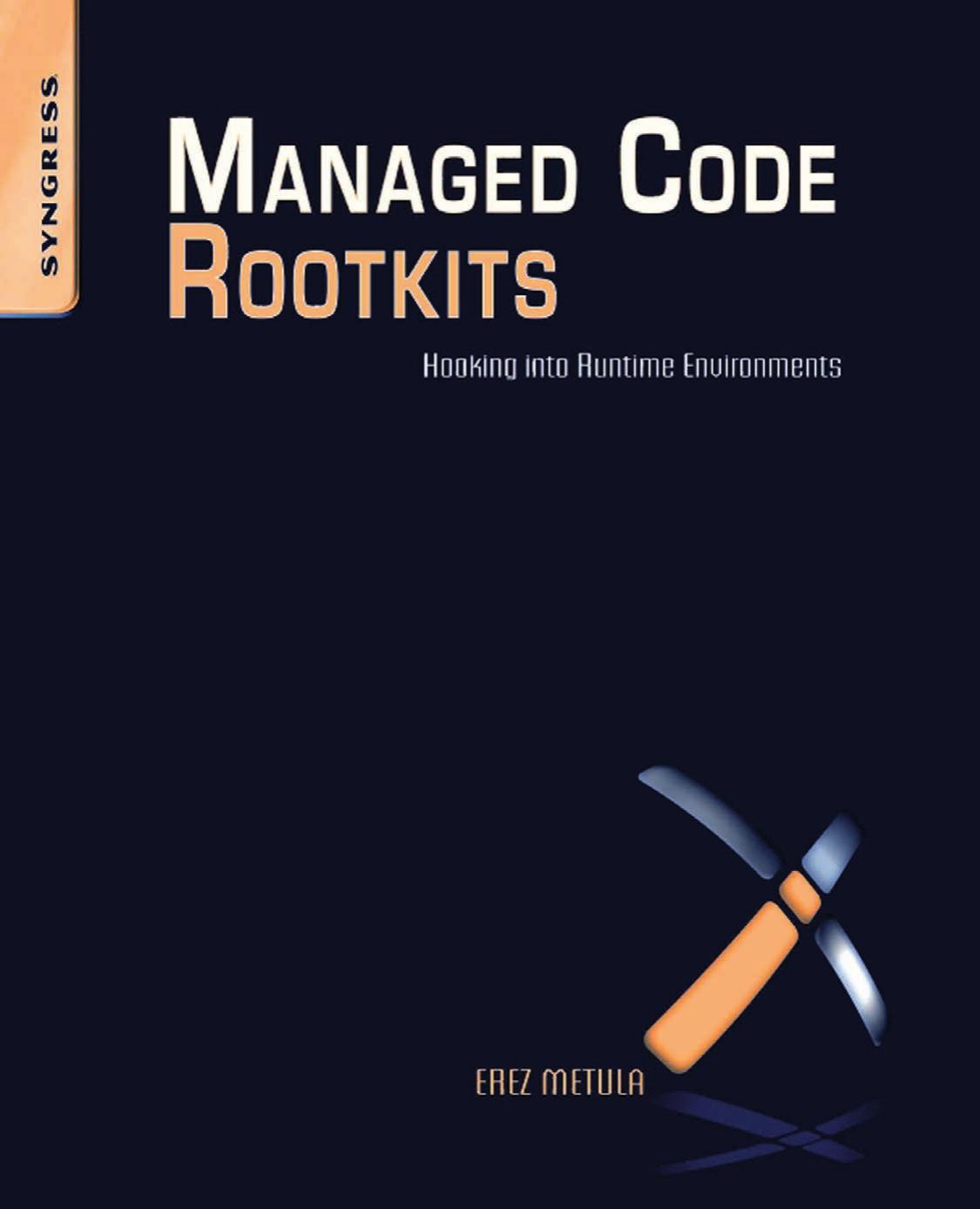Managed Code Rootkits by Metula Erez

Author:Metula, Erez [Metula, Erez]
Language: eng
Format: epub, pdf
ISBN: 978-1-59749-575-2
Publisher: Elsevier Science
Published: 2011-02-26T16:00:00+00:00
Tip
It is very easy to create the byte array representing the file; simply use a hex editor tool such as HexEdit. It is also possible to create the byte array programmatically by calling the ReadAllBytes(filename) method from the File class.
The preceding code first defines three local variables to be used as a string, a byte array, and a binary file writer. It loads the name of the file (CreatedFile.txt) to thestack as the value for the newly created file along with its content saved as a byte array inside a private class called WrappedData (we will discuss this in more detail in the next paragraph). This class calls the Open method from the File runtime class that creates the file, saves the byte array as its content using the Write method from the BinaryWriter runtime class, then cleans up afterward.
WrappedData is a private class used as a wrapper for the byte array representing the file contents. It is used as a container class for the content that encapsulates the actual bytes of the file and the proper initialization code. Wrapping the byte array as a class provides a separation between the file content and its usage.
The content of the file (in our case, the string “hello”) is saved as an internal class member variable called byteArray, containing the hex values of 68 65 6C 6C 6F in this example. Those values can be the content of any file, including binary executable files, since it is legitimate content of an ordinary byte array.
Download
This site does not store any files on its server. We only index and link to content provided by other sites. Please contact the content providers to delete copyright contents if any and email us, we'll remove relevant links or contents immediately.
Hit Refresh by Satya Nadella(9085)
The Compound Effect by Darren Hardy(8873)
Change Your Questions, Change Your Life by Marilee Adams(7690)
Nudge - Improving Decisions about Health, Wealth, and Happiness by Thaler Sunstein(7662)
The Black Swan by Nassim Nicholas Taleb(7064)
Deep Work by Cal Newport(6970)
Rich Dad Poor Dad by Robert T. Kiyosaki(6517)
Daring Greatly by Brene Brown(6476)
Principles: Life and Work by Ray Dalio(6299)
Playing to Win_ How Strategy Really Works by A.G. Lafley & Roger L. Martin(6092)
Man-made Catastrophes and Risk Information Concealment by Dmitry Chernov & Didier Sornette(5958)
Digital Minimalism by Cal Newport;(5707)
Big Magic: Creative Living Beyond Fear by Elizabeth Gilbert(5681)
The Myth of the Strong Leader by Archie Brown(5463)
The Slight Edge by Jeff Olson(5380)
Discipline Equals Freedom by Jocko Willink(5337)
The Motivation Myth by Jeff Haden(5176)
The Laws of Human Nature by Robert Greene(5087)
Stone's Rules by Roger Stone(5053)
